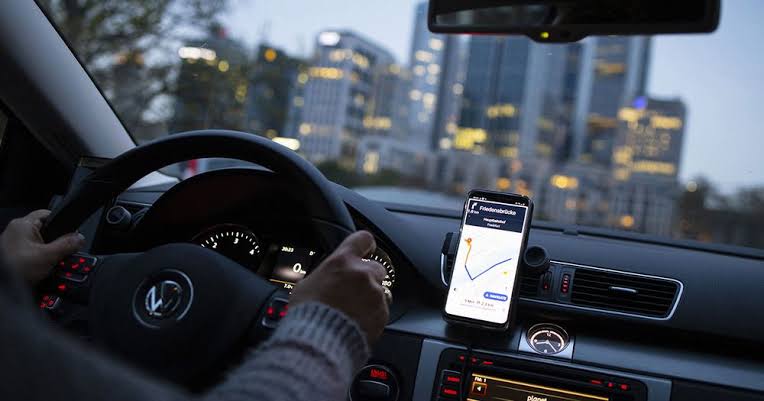Physical Address
60 Ekwema Cres, Layout 460281, Imo
Physical Address
60 Ekwema Cres, Layout 460281, Imo

In response to the recent fuel price hike, drivers for ride-hailing companies like Uber and Bolt are increasingly opting to negotiate fares off-app.
This shift comes as a direct consequence of the fuel price increase that has significantly impacted the earnings of drivers, forcing them to seek alternative methods to maintain their income levels.
The fuel price hike has been a pressing issue for many drivers who rely on ride-hailing platforms for their livelihood.
With fuel prices soaring, drivers are finding it challenging to cover their operating costs, which has led to a reevaluation of how they conduct business.
The increased fuel expenses have not only affected their take-home pay but have also made it difficult for them to sustain a viable income while adhering to the fare structures set by these companies.
Many drivers have reported that the fuel price increase has resulted in a significant reduction in their earnings, prompting them to seek ways to negotiate better fares directly with passengers.

A driver who chose to remain anonymous, spoke to Silicon Africa “I get little earnings after the day’s job and the money is not even enough to take care of my family of six. So some of us bolt drivers have decided to get more earnings codedly by negotiating with passengers off-app”
This trend of off-app negotiations is becoming more common, as drivers look to bypass the commission fees charged by ride-hailing platforms and secure a more favorable rate for their services.
The decision to negotiate fares off-app represents a shift in how drivers engage with their customers.
Traditionally, fares are set by the ride-hailing companies, leaving drivers with little room to adjust prices based on their individual circumstances.
However, the current economic climate has led many drivers to take matters into their own hands, seeking to establish direct communication with passengers to negotiate rates that better reflect their costs.
This practice has raised concerns among ride-hailing companies, which rely on a consistent pricing model to maintain their business operations.
As more drivers engage in off-app negotiations, these companies may face challenges in maintaining their market share and ensuring customer satisfaction.
The rise of off-app negotiations could potentially disrupt the established business model of ride-hailing platforms, leading to a reevaluation of their pricing strategies.
Advancements in technology have played a significant role in facilitating off-app negotiations.
Drivers are using various communication tools, such as messaging apps and social media, to connect with passengers before or after rides.
This direct line of communication allows drivers to discuss fares and negotiate prices without the constraints imposed by ride-hailing platforms.
Moreover, the rise of social media has enabled drivers to share their experiences and strategies for negotiating fares.
Online communities and forums have emerged where drivers exchange tips and advice on how to effectively communicate with passengers and secure better rates.
This collective knowledge-sharing is empowering drivers to navigate the challenges posed by the fuel price hike and make informed decisions about their earnings.
Read Next: Bolt Nigeria now Offers Fuel and Repair Loans to Drivers on its App
While some passengers may appreciate the opportunity to negotiate fares directly with drivers, others may be hesitant to engage in off-app negotiations.
A staff member with Silicon Africa narrated her experience with a bolt driver, “My husband and I ordered a bolt and the bolt driver told us to turn off the app so that we can discuss the price off-app. He stated the reason is because they get little earnings after the company has deducted from the money. This didn’t sit well with me.”
Concerns about safety and the potential for fare disputes could deter some riders from participating in this new approach.
Additionally, passengers who are accustomed to the convenience of app-based pricing may find the prospect of negotiating fares off-putting.
Ride-hailing companies are also monitoring passenger reactions to this trend.
If off-app negotiations become widespread, these companies may need to adapt their strategies to retain customers and ensure a seamless experience.
This could involve reevaluating their fare structures or implementing new features that allow for more flexible pricing options within the app.
The fuel price hike has undoubtedly reshaped the landscape of the ride-hailing industry, prompting drivers to explore new avenues for income generation.
As off-app negotiations gain traction, the future of ride-hailing could look markedly different.
Companies may need to adapt to this evolving environment by finding ways to support their drivers while still providing a reliable service to passengers.
The recent fuel price increase has forced Uber and Bolt drivers to rethink their pricing strategies, leading to a rise in off-app negotiations.
As this trend continues to develop, it will be crucial for both drivers and ride-hailing companies to navigate the challenges and opportunities presented by this shift in the industry.
The ongoing dialogue between drivers and passengers will ultimately shape the future of ride-hailing services in a world increasingly affected by fluctuating fuel costs.
Was this information useful? Drop a nice comment below. You can also check out other useful contents by following us on X/Twitter @siliconafritech, Instagram @Siliconafricatech, or Facebook @SiliconAfrica.